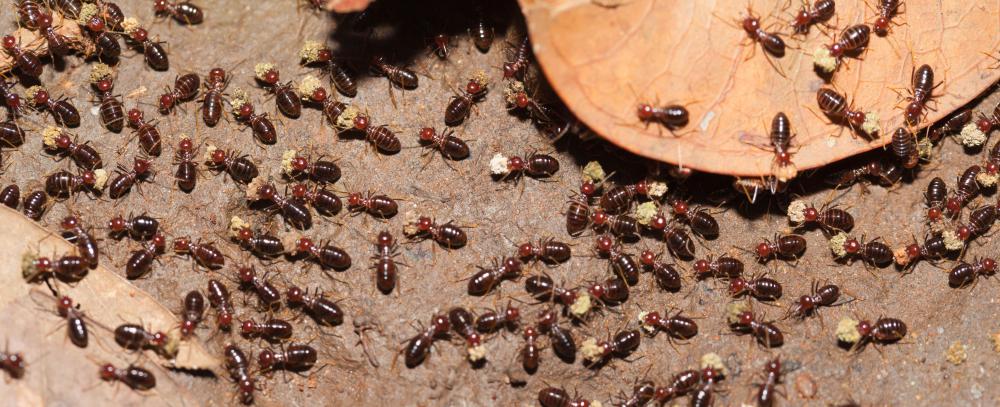At AllThingsNature, we're committed to delivering accurate, trustworthy information. Our expert-authored content is rigorously fact-checked and sourced from credible authorities. Discover how we uphold the highest standards in providing you with reliable knowledge.
What is a Burrowing Owl?
The burrowing owl (Athene canicularia) is one of the smaller of the owl species and is known for nesting in underground burrows. Ranging in length from 9 to 11 inches (23 to 28 cm), the burrowing owl is small enough to take over habitats once used by rodents. These habitats are underground tunnels hollowed out by squirrels, gophers, or prairie dogs.
Pastures, open prairies, and farmland are the primary environments where the burrowing owl can be found. Their short stature allows them to remain hidden from view in low grasslands. Primarily brown in color, they have white spots on the head and white stripes across the chest. Their coloring also aids in camouflaging them while on the ground.

Burrowing owls have long legs, which give them the ability to run along the ground and hunt for prey. During the day they feed on termites, beetles, and other insects. Fruits, seeds, and lizards are also components of their diet. Burrowing owls can be very active at sunset and they will hunt for mice and other rodents as it gets dark. They hunt for rodents by diving down on them from above.

The geographic range of the burrowing owl includes areas of the western United States, southwestern Canada, and Florida. They can also be found throughout Mexico and in the South American countries of Brazil and Argentina. Owls living in areas with colder temperatures migrate to warmer areas during the winter months.
Springtime is the breeding season for the burrowing owl. The female owl can lay up to 12 eggs that she will care for in the burrow for about a month until they hatch. Male owls will stand watch outside the burrow and then assist in feeding the newborn chicks after they hatch. At one month of age, the chicks are able to begin wandering on their own. The parents will care for the young for a few months.

Natural predators of these owls include other large birds of prey, snakes, skunks, cats, dogs, and even armadillos. When threatened, the burrowing owl exhibits a characteristic bobbing up and down. The owl will then dive into the safety of the burrow.
Humans can also create a danger for the burrowing owl. Because these owls live on the ground, they are at risk of being hit by vehicles. As farmland and grasslands are developed, the natural habitat for the owl is disappearing. Human destruction of burrows also reduces the available nesting areas for the burrowing owl.
Frequently Asked Questions
What is a Burrowing Owl and where can it be found?

A Burrowing Owl is a small, ground-dwelling bird with long legs, native to open landscapes across North and South America. They are often found in grasslands, deserts, and other open habitats, where they use burrows for nesting and protection. According to the Cornell Lab of Ornithology, these owls are year-round residents in the southern parts of their range but may migrate in northern areas.
How does the Burrowing Owl differ from other owl species?
Unlike most owls, Burrowing Owls are diurnal, meaning they are active during the day. They have a unique habitat preference for underground burrows, which they often take over from ground squirrels or prairie dogs. Their physical appearance is distinctive with bright yellow eyes and a lack of ear tufts, setting them apart from other owl species.
What do Burrowing Owls eat and how do they hunt?
Burrowing Owls primarily feed on insects, small mammals, amphibians, and reptiles. They hunt by waiting on a perch or walking along the ground to capture prey. According to the National Wildlife Federation, their diet can vary widely based on their habitat, and they have even been known to eat fruits and seeds occasionally.
Are Burrowing Owls endangered or threatened?
Burrowing Owl populations are declining and are considered endangered or threatened in various regions. Habitat destruction due to development and agriculture is a significant threat. The International Union for Conservation of Nature (IUCN) lists the Burrowing Owl as a species of "Least Concern" globally, but local protections may exist due to declining populations in specific areas.
How do Burrowing Owls create their burrows?
Burrowing Owls typically do not dig their own burrows but rather use abandoned ones created by mammals like prairie dogs or ground squirrels. However, they can modify and maintain these burrows by digging to expand or clean them out. In areas lacking natural burrows, they may nest in man-made structures provided for conservation purposes.
What conservation efforts are in place to protect Burrowing Owls?
Conservation efforts for Burrowing Owls include habitat protection and restoration, creation of artificial burrows, and public education programs. Organizations like the Audubon Society and various wildlife agencies work to monitor populations and implement conservation strategies. In some regions, land development is managed to avoid disturbing Burrowing Owl habitats, and research is ongoing to better understand their ecological needs.
AS FEATURED ON:
AS FEATURED ON:














Discuss this Article
Post your comments